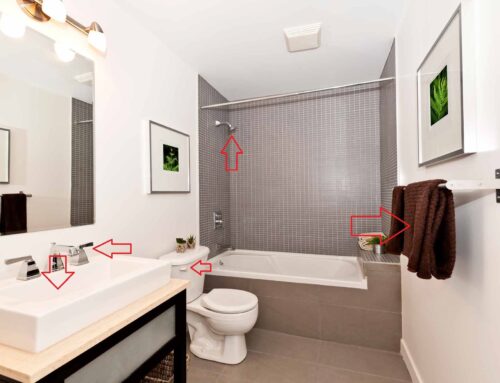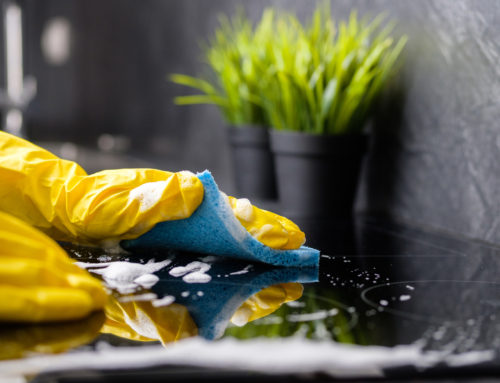Is Move in Cleaning Worth It?

How important is it to have professional cleaning before I move into a new place?
If you’re wondering how important is it really to have a house cleaning service before moving into a new home, apartment, condo or dwelling of any sort, here are a few reasons why:
Comfort and Aesthetics:
A dirty home can be unpleasant to live in, it isn’t exactly rolling out the welcome mat, and won’t feel like home until it has been cleaned and organized. Since the majority of dust is sloughed off skin cells, anytime you see dust, it’s effectively “someone else” that alone is worth a call to the cleaning company service. A professional cleaning service can help make sure that your new home is clean, fresh-smelling, and comfortable, which can help you settle in more easily.
Health and Safety:
Moving into a new home that has not been cleaned properly can expose you and your family and pets to allergens, dust, and other potentially harmful particles that could affect your health. Additionally, mold, mildew, and other types of bacteria grow in moist and dirty environments, and these can cause health problems if left unchecked.
Considering that the kitchen countertop has more bacteria than the toilet seat, for this and other reasons, a thorough cleaning by a professional house cleaning service can help ensure that your new home is a safe and healthy place to live.
Efficiency and Time-Saving:
Moving can be a stressful and time-consuming process, with everything on the go, one’s personal bandwidth is generally at it’s max, and cleaning your new home on top of that can add to the workload overload. By hiring a professional cleaning service, you can save time and focus on other important aspects of your move, such as unpacking and setting up your new home.
Germs in the Home -> Worst Areas:
How dirty is an average home that is cleaned weekly in terms of grime, bacteria, mold, skin cell shedding and more? Here are some top statistics:
- Shedding skin cells: The majority of dust is sloughed off skin cells. According to a study published in the Journal of Investigative Dermatology, the average person sheds about 1.5 grams of skin cells per day. This equates to roughly 0.001% of a person’s body weight per day. While this may seem like a small amount, over time, it can accumulate on surfaces and contribute to household dust. Let’s face it, no one wants to be beside themselves.
- Germ counts: Germ counts in the home can vary widely depending on factors such as the number of occupants, the cleanliness of the home, and more. However, according to a study conducted by the National Sanitation Foundation (NSF), the most commonly contaminated areas in the home include kitchen sinks, dish sponges, and bathroom toilets. In general, it’s a good idea to regularly clean and disinfect high-touch surfaces such as doorknobs, light switches, and countertops to help reduce the spread of germs.
- Dust volume: The volume of dust in a home can also vary widely depending on factors such as the size of the home, the number of occupants, and the cleaning habits of the occupants. However, according to the Environmental Protection Agency (EPA), the average six-room home can accumulate up to 40 pounds of dust in a year. This dust can contain a variety of contaminants, including skin cells, pet dander, pollen, and more. If someone occupied the space before you, then that “dust” is effectively “them”.
- Pet dander: It’s not just fur. According to the American Lung Association, pet dander is one of the most common indoor allergens. Dander is made up of tiny flakes of skin that are shed by cats, dogs, and other animals. These flakes can become airborne and be inhaled, leading to allergic reactions in some people. Regular cleaning, including vacuuming and dusting, can help to reduce the amount of pet dander in the home.
- Kitchen sinks: According to a study conducted by NSF International, kitchen sinks are one of the most germ-filled areas in the home. In fact, the study found that kitchen sinks can harbor up to 100,000 times more germs than a bathroom or toilet seat. Some of the most common types of bacteria found in kitchen sinks include E. coli, salmonella, and staphylococcus.
- Kitchen countertops: The kitchen countertop is a high-touch surface where food is prepared, making it a prime location for bacterial growth. Here are some statistics on the germs found on kitchen countertops: According to a study conducted by the National Sanitation Foundation (NSF), kitchen countertops can harbor up to 119,000 colony-forming units (CFUs) of bacteria per square inch. Some of the most common types of bacteria found on kitchen countertops include E. coli, salmonella, and staphylococcus. Another study conducted by the University of Arizona found that the average kitchen countertop contains more bacteria than the average toilet seat.
- Kitchen floors: Kitchen floors can also harbor a large number of germs, particularly in areas where spills or food debris may accumulate. According to a study published in the International Journal of Environmental Research and Public Health, kitchen floors can contain a variety of bacteria, including E. coli, salmonella, and listeria. It’s recommended to regularly clean and disinfect kitchen floors to reduce the risk of bacterial contamination.
- Kitchen appliance handles (such as refrigerator/oven/etc): According to a study conducted by the National Sanitation Foundation (NSF), refrigerator handles can harbor up to 5,440 CFUs of bacteria per square inch. Some of the most common types of bacteria found on refrigerator handles include E. coli, salmonella, and listeria. Another study conducted by the University of Arizona found that the average refrigerator handle contains about 350 bacteria per square inch.
- Bathroom toilets: In the bathroom, toilets are one of the most germ-filled areas. According to the NSF study mentioned earlier, the average toilet seat contains about 295 bacteria per square inch. Some of the most common types of bacteria found in toilets include E. coli, streptococcus, and staphylococcus.
- Bathtubs and showers: Bathtubs and showers can also harbor a large number of germs, particularly in areas where moisture is present. Some of the most common types of bacteria found in bathtubs and showers include staphylococcus, streptococcus, and pseudomonas. It’s recommended to regularly clean and disinfect these areas to reduce the risk of bacterial growth.
- Faucets: Faucets in both the kitchen and bathroom can also harbor a large number of germs. According to a study published in the Journal of Environmental Health, the average faucet handle contains about 21,000 germs per square inch. To reduce the risk of bacterial contamination, it’s recommended to regularly clean and disinfect faucet handles, particularly after handling raw meat or other potentially contaminated materials.
- Door handles: Door handles are a high-touch area in the home that can also harbor a large number of germs. According to a study conducted by the University of Arizona, the average door handle contains about 8,643 germs per square inch. To reduce the risk of bacterial contamination, it’s recommended to regularly clean and disinfect door handles, particularly in high-traffic areas.
Airborne particles: In addition to bacteria, the air in the home can also contain a variety of particles that can be harmful to health. These particles can include dust, pollen, pet dander, and mold spores, among others. According to the EPA, indoor air can be up to five times more polluted than outdoor air. Regular cleaning, including vacuuming and dusting, can help to reduce the amount of airborne particles in the home.
It’s clearly imperative to keep high-touch areas and surfaces clean and disinfected can help to reduce the spread of germs and keep your home healthy and safe before moving into your new home, especially as this is other people’s grime and essentially bacteria and germs.
A house cleaning service can be an important investment when moving into a new place. It can help ensure that your new home is a healthy, comfortable, and welcoming place to live.








